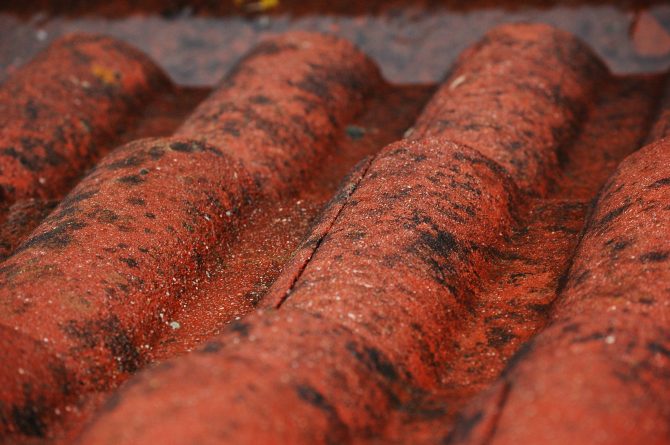Treating and Protecting Terracotta Tiles
Advice

Terracotta is Italian for (and sounds a lot better than!) ‘cooked earth’. In French it’s ‘terre cuite‘, and the traditionally made tiles are usually referred to as ‘tomettes‘. Terracotta is an attractive, rustic material for both old and new houses. The clay tiles give character to a room and a terracotta floor looks more authentic against an exposed stone or roughly plastered wall than ceramic tiles. If you’re not careful however, it can be very easy to become a slave to your terracotta floor. Here are some tips on how to avoid the potential pitfalls when sealing, protecting and maintaining terracotta floor tiles.
When we acquired our medieval farmhouse the old terracotta floors looked beautiful with an attractive sheen. Maintenance however soon turned into a nightmare. The tiles are approximately 50 years old and in that time have gone through such an array of treatments that I found it hard to know what to do with them. They soon became dull and grey in spite of faithful mopping with linseed oil soap (savon à l’huile de lin) and when I started doing research and asking our local terracotta manufacturer for advice I realized that there is a vast array of opinions on terracotta care. After much trial and error the following are my recommendations:
Step 1 – Cleaning and Stripping Back
If you’re not happy with the way your tiles look, you may need to strip them. The first hurdle is finding out what product covers your tiles. You can do this by scraping the floor gently with a decorator’s knife.
– If you can scrape off the dirt and the bare, porous tiles appear underneath (that is, if water disappears into the tile after a few minutes) then you know you’re dealing with dirt only. In that case, you can clean the floor with a cleaning product for porous tiles, such as Libéron’s Nettoyant Concentré Tommettes.
– If the tile that you’re scraping becomes a bit shiny and water beads on it then yours is waxed. To remove wax and other old products entirely, you need to scrub the floor with a décapant such as Spado’s Soude Caustique, Décapsir Plus by Rairies Montreux or Starwax’s Super Décapant Sans Rinçage. Do wear gloves and read the instructions. You’ll need to rinse several times with clean water. Keep doing this until you’re left with clean bare tiles.
– If you scrape and not much happens, other than that your tiles stay dark red and appear to be almost painted, then you’re dealing with so called Rouge de Prusse mixed with glue and sealants. This treatment was popular in the last century until about the 1960s and was applied to make terracotta tiles easier to maintain. We had some remnants of this in one room and I did not like the look at all, although I sympathise with the reasons for applying it. The best way to get rid of this layer of goop without damaging the tiles underneath is with a water-based paint remover such as Dilunett by Durieu available at Castorama. It’s not an easy job and you’ll need to apply some elbow grease. Any remaining stains can be removed with a solution of soda crystals, as discussed above. Very stubborn stains can be treated with a bleach solution, although I find that a stain here and there can add character.
– If your only problem is efflorescence (salt deposits or la laitance), then you can clean the tiles with a solution of phosphoric acid, Starwax’s Decapant Laitances de Ciment, Libéron’s Decapant Voiles de Ciment Liboscol, or HG’s Dissolvant Puissant Restes de Ciment.
Step 2 – Sealing and Protecting
This step applies to both old and newly laid tiles, the only difference being that newly laid tiles should be impregnated and sealed before grouting. Because unprotected terracotta floors pick up dirt and stains very easily, it is important to seal them. The floor first has to dry for one to two weeks after you’ve made sure that all residues of cleaning products have been rinsed off.
There are two main methods for impregnating and sealing terracotta tiles; traditional and synthetic. The traditional method entails first saturating the tiles with several coats of linseed oil mixed with turpentine (l’huile de lin et la térébenthine). Most people apply a 50/50 mixture, some boil the mixture before applying it, and others swear by a different proportion for every consecutive coat. If you type traitement des terres cuites á l’ancienne into a search engine you’ll find several different recipes. You know that the tiles are fully saturated when water beads on them. At this stage the tiles aren’t porous anymore and several layers of warm wax are then applied over the course of a month to protect the tiles from stains and damage. The wax is buffed after each coat and the result is a beautiful, rich and natural looking sheen. A terracotta floor that has been waxed or synthetically sealed should be cleaned with a pH-neutral floor soap such as Vigor or Starwax’s Nettoyant pH Neutre.
The traditional treatment obviously is a huge job and I’m getting tired just thinking about it. In addition, you can’t walk on the tiles in between all these treatments, so it’s best done before you move in. The disadvantage of this method is not only the hard work involved for this initial process, but the wax needs to be buffed and topped up regularly and depending on traffic and use of the floor, the wax layers have to be removed and reapplied every few years! In our area here in the Lot I understand that many people don’t wax anymore and just apply a solution of linseed oil and mop with linseed oil soap, but the linseed oil attracts dirt and the tiles are never really clean. It now becomes clear why terracotta tiles were often covered in Rouge de Prusse and glue – life just is too short…
In come the synthetic products. I usually prefer natural products and initially did not even look into the synthetic alternatives. I was worried that synthetic sealants would lock in moisture and as our floors are laid straight on the ground in a lime cement mixture, this would be a problem. For tiles with a damp-proof membrane or not on a ground floor, this is less of an issue and you can use any synthetic sealant such as Starwax’s Imprégnant anti-tâche or as recommended by you local terracotta tile supplier (solvent or acrylic based). For tiles that need to breathe or if you prefer to use less toxic materials, there are water-based sealants such as Tile Doctor’s Seal & Go and Libéron’s Protection anti-tache. Your floor won’t have that lovely ‘antique’ look with synthetic sealants, but application and maintenance is much, much easier and any surface protector can be topped up without having to strip everything back again. So when a terracotta supplier or your builder recommends using a synthetic impregnating sealant, don’t immediately assume that treating your tiles á l’ancienne has to be the better method. It’s a fact that old-fashioned materials and methods are often more effective and attractive, but in the case of treating terracotta tiles I have embraced the ‘modern’ alternative!
See also: latest tips on home decoration
Share to: Facebook Twitter LinkedIn Email
More in cooking, courses, decoration, people, provence, walking, work
By Sophia Mose
Leave a reply
Your email address will not be published. Required fields are marked *




REPLY